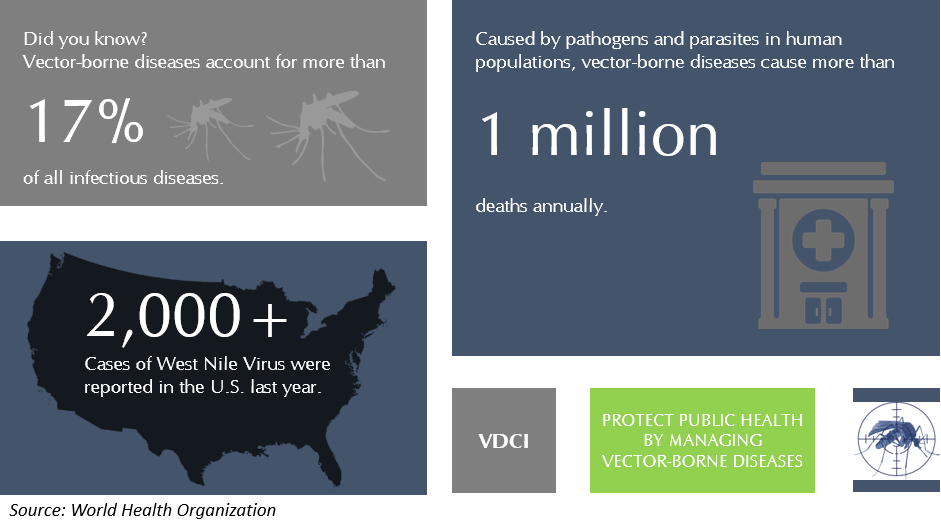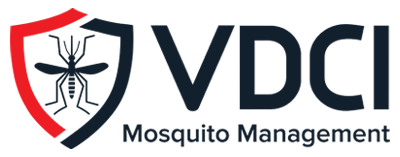
Education, Public Health, and Management
Our world is becoming more accessible, allowing vectors and many of the diseases they carry to find new homes. The current spotlight on Zika virus has the public seeking to gain a better understanding of vector-borne diseases and what they can do to protect themselves as well as their community.

Within the United States, West Nile Virus (WNV), Eastern Equine Encephalitis (EEE), Chikungunya, Lyme disease, and Rocky Mountain spotted fever are seen most often. Infected arthropod species, such as mosquitoes and ticks, transmit vector-borne diseases to humans and animals by biting.
Various conditions can lead to the spread of vector-borne diseases and predicting where and when these outbreaks will occur can be challenging. The best prevention is educating individuals on what public health efforts can be practiced to reduce vector populations in their community.
 VDCI is a company built on the foundations of public health, ethics, professionalism, and technical expertise. We establish vector management programs that are based on an understanding of the underlying vector’s ecology and rooted in the current science of environmentally sound control measures.
VDCI is a company built on the foundations of public health, ethics, professionalism, and technical expertise. We establish vector management programs that are based on an understanding of the underlying vector’s ecology and rooted in the current science of environmentally sound control measures.
Mosquito-Borne Diseases
- Zika Virus
- West Nile Virus (WNV)
- Eastern Equine Encephalitis (EEE)
- Chikungunya
- Dengue
- Malaria
- Yellow Fever
- St. Louis Encephalitis (SLE)
- Heartworm Disease
Tick-Borne Diseases
Monitoring Real-Time Mosquito-Borne Disease Activity
The CDC has a number of tools in place to help citizens and organizations track vector-borne diseases. You can view a live and archival map of disease activity in the U.S. CDC’s ArboNet map provides an illustrated overview of mosquito and other vector-borne activity across the U.S., including West Nile virus (WNV), St. Louis Encephalitis (SLE), Eastern Equine Encephalitis (EEE), La Crosse virus (LAC), local and travel acquired Dengue, local and travel-acquired Chikingunya, local and travel-acquired Zika virus (ZKV), and more. Utilize the tabs across the top to choose the specific vector-borne disease to track, and the drop-down menu at the right to select the year.

